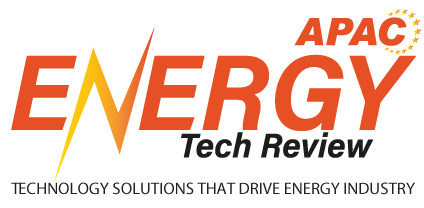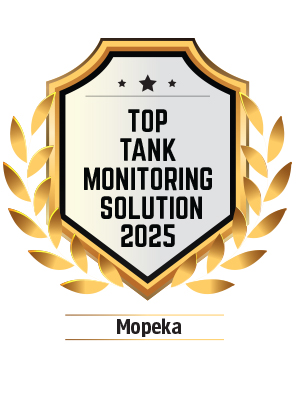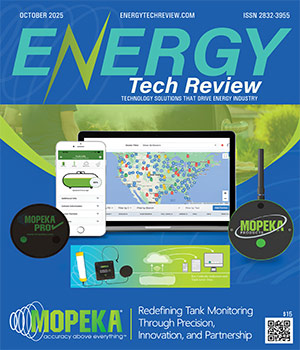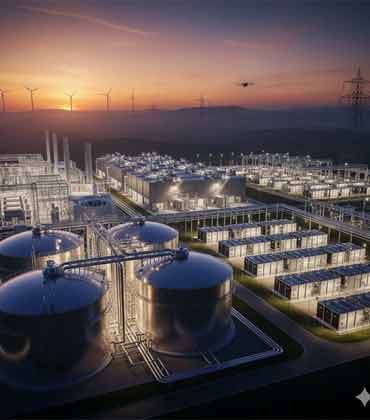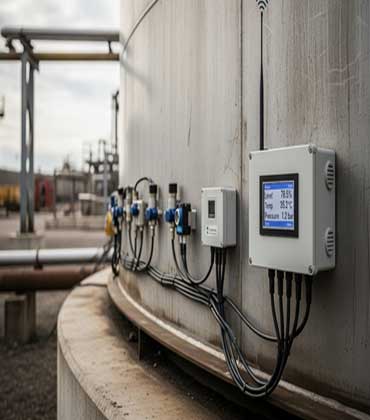Engineering Innovation Meets Customer-Centric Thinking In an industry long reliant on mechanical gauges and outdated pressure sensors, Mopeka® has emerged as a global leader—setting a new standard for accuracy, safety, and operational efficiency in liquid commodity storage and delivery. Mopeka’s patented sonar-based monitoring systems deliver real-time volumetric readings accurate to within a hundredth of an inch—on everything from small 20lb propane cylinders to industrial tanks holding greater than 90,000 gallons. Unlike traditional systems, Mopeka’s technology operates without floats or pressure gauges, making installation straightforward on both legacy and new tanks. “Our system’s adaptability and precision are essential in high-volume environments where even a one-percent discrepancy can lead to significant inefficiencies,” says Kevin Jaffe, Chief Operating Officer. From consumer-friendly models like the Pro Check and Pro Check Universal to commercial-grade options such as the Pro Plus and TD40, Mopeka offers a full range of solutions equipped with extended-range Bluetooth, satellite, or Global SIM cellular connectivity. Every model is designed for durability, delivering three to five years of battery life with easy replacement. Technology That Outperforms the Competition While many competitors rely on gauge-based technologies—often plagued by inaccuracies of 7–9%—Mopeka bypasses the gauge entirely. Its patented sonar technology consistently achieves greater than 99% accuracy while also delivering integrated cathodic protection and tank level monitoring in a single unit. The system is non-invasive, works equally well on pressurized and nonpressurized tanks, and operates across multiple networks, including satellite, Bluetooth, and global SIM cellular connections. The Commercial Line of sensors is Class 1 Div 1 certified for enhanced safety and provides real-time alerts and compliance reporting to streamline oversight and operational control. Mopeka’s technology is as versatile as it is precise, serving both business-to-business and business-to-consumer markets worldwide.
Top Long Duration Energy Storage Technology 2025
Reducing carbon-intensive energy remains a policy goal for utilities and large customers across the U.S. According to SEPA, 81 percent of customers are served by electric utilities that have aggressive Net Zero Carbon targets by 2035. In addition, large commercial and industrial customers are seeking more than just Renewable Energy Credits (REC); they are seeking hourly matching of carbon-free energy as part of their corporate objectives. These policy goals have created a unique opportunity for long-duration energy storage (LDES) technologies to deliver this value. ESS Tech, Inc. is emerging as a frontrunner in this space with its American-made long-duration iron flow batteries. A leading manufacturer of LDES solutions, the company aims to accelerate decarbonization, safely and sustainably, through longer-lasting energy storage. Unlike traditional lithium-ion batteries that have proven short-duration capabilities, ESS Tech’s solutions are designed to provide 10 plus hours of reliable power. With increasingly faster charging, the ESS batteries can maximize increase efficient energy consumption by capturing lowest cost solar and wind energy during their generation window. “Our product’s ability to charge during the day and discharge during the night helps utilities, industrial customers, developers and independent power producers to achieve green base load,” says Paul Notti, Vice President of Sales and Business Development. To maximize energy storage efficiency, ESS Tech leverages a proprietary iron-based electrochemistry that converts liquid iron into solid form through electroplating. The solid iron is deposited onto membranes of varying thickness, enabling a flexible and scalable storage capacity. During the discharge phase, the solid iron turns into liquid, releasing stored energy in a controlled and sustainable manner. Scalability is another key feature of its solutions. The ability to offer over 10 potential discharge hours is controlled by the amount of electrolyte stored. Placing bigger tanks enables users to access longer discharge hours by adding more electrolyte. In addition, the electrolyte is made from earth-abundant elements like iron, salt and water, ensuring easily sourced, safe materials. ESS’s batteries are built to last 25 years with no performance degradation and unlimited cycling. They are capable of enduring thousands of charge-discharge cycles without having to replace cells or electrolyte..
Renewable Energy Asset Management Solution
The renewable energy sector is at a crucial inflection point, poised to make a substantial impact on global energy demand over the coming years. Realizing the full potential of renewable energy assets will depend on the ability to provide secure and reliable services to the bulk electric system. Radian Generation is at the forefront of this market offering a powerful set of software and services to help renewable asset owners and stakeholders maximize their contributions to the energy transition. “We deliver a compelling and purposeful combination of software plus asset management, compliance, cybersecurity and operational technology services providing leverage for our clients to focus on deploying additional generation while ensuring their operational portfolio is secure, reliable and compliant,” says Joe Kastner, CEO. Since 2013, Radian Generation has been providing services and software to the industry, and today the team of almost 250 employees supports over 150 global customers that are contributing to the energy transition.
CXO INSIGHTS
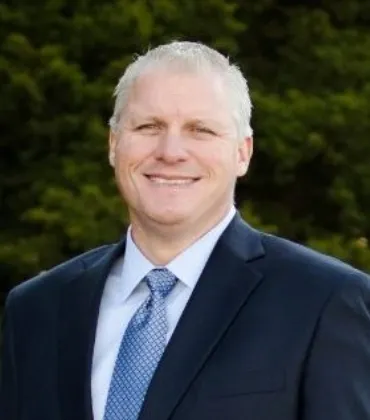
With the Right Rules, Energy Storage Can Take the Power Grid to the Next Level
Todd Hranicka, Director - Energy Services, Public Service Electric & Gas Company

Repurposing Resources: Installing New Battery Energy Storage Utilizing Existing Infrastructure
Julian Kaufmann, Executive Vice President, CAMS
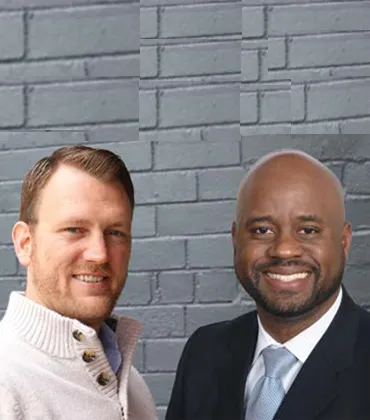
Safety Management System
Eric T. Belle , VP Engineering and Standards, and Jonathan DeVries, VP of Strategy and Risk Management, NiSource

Connecting the world one device at a time
Enoch Charles, Information Technology - Smart Grid Transport Manager, CenterPoint Energy

BESS Auxiliary Power
Pengfei Wang, Principal Engineer, BESS Technology Optimization, RWE

Evolving Energy Choices with the Customer in Mind
Leslie Myers, Product Manager, Renewables, Puget Sound Energy

Building Tomorrow's Energy Infrastructure Today
Brandon Croley, Director, Information Technology, Williams
IN FOCUS
The Lifecycle Imperative in Long-Duration Energy Storage
Long-Duration Energy Storage (LDES) is essential for a decarbonized economy, requiring a shift to Circular Storage, integrating sustainability into design, and enhancing recycling for a sustainable future.
Tank Monitoring as a Service (TMaaS): A New Model for Operational Efficiency
TMaaS overhauls bulk liquid and gas storage management, transitioning from manual monitoring to a data-driven model that enhances efficiency, profitability, and operational insights across industries.
EDITORIAL
Resilient Energy Systems Making Operations Safer and Sustainable
Energy and resource management evolve from static reserves to dynamic systems built for performance and resilience. With nations enforcing strict reliability and sustainability regulations, energy grids are surpassing the limits of short-duration batteries. Long-duration energy storage (LDES) is stepping in to ensure renewable sources meet mandated capacity targets. Meanwhile, regulators are increasingly scrutinizing how industries manage fuels and chemicals. Advanced tank monitoring is now a digital safeguard that delivers real-time leak detection and lowers emissions. At the forefront is the rise of iron-air and flow batteries, an LDES designed to deliver eight hours or more of power. These technologies give grid operators a practical tool to meet renewable integration targets while retiring carbon-heavy peaker plants. In tank monitoring, the shift is toward IoT-enabled platforms that combine radar sensing with cloud analytics. Beyond simple level tracking, these systems automate compliance reporting, detect real-time anomalies and forecast demand. This helps industries to stay ahead of tightening regulations while reducing operational risks and environmental impact. Driven by these trends, the energy management market is projected to reach US$111.86 billion with a 13 percent CAGR by the end of 2030. This magazine highlights thought leadership articles from Christian López, Senior Director Engineering: Performance, Commissioning & SCADA at The AES and Seth Little, Director of Market Development and Partnerships at CLEAResult, who share insights shaping the future of energy technology. In this edition, featuring leaders transforming regulatory challenges into strategic assets that power sustainable growth and operational excellence, we hope you find the right partner to meet your organization’s needs.
